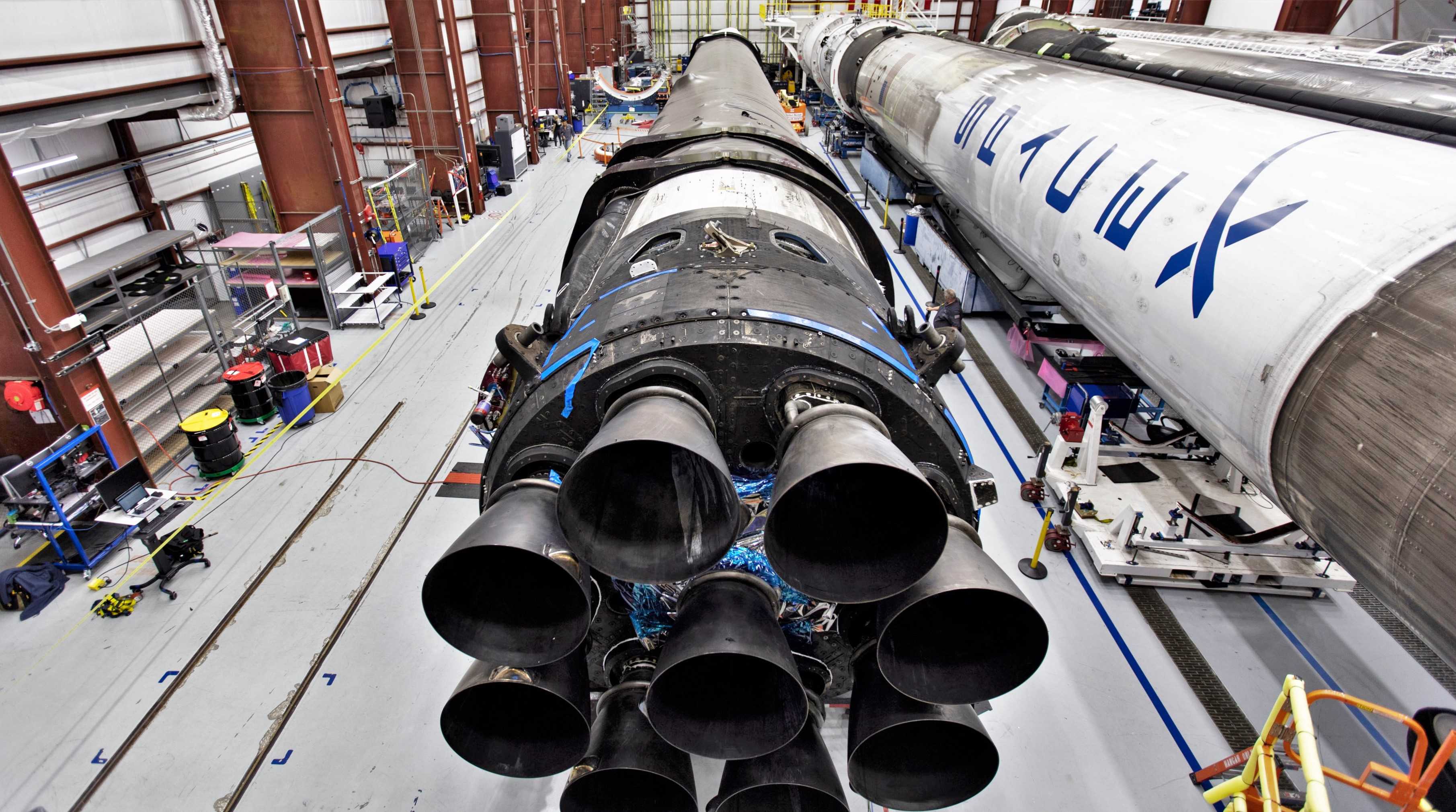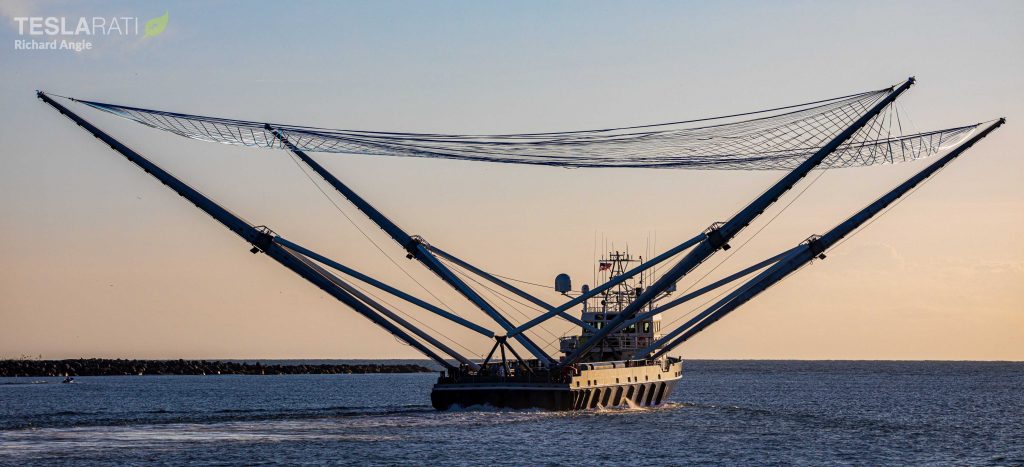

News
SpaceX’s first Falcon 9 launch in months gets a launch date
SpaceX’s first Falcon 9 launch in more than three months finally has a launch date and it looks like the company’s growing fleet is going to attempt to catch (or land) almost every piece of the rocket, a big first for Falcon 9 reusability if SpaceX can pull it off.
After an exceedingly long wait, SpaceX’s next launch – Starlink’s first “v1.0” mission – is finally on the Eastern range and is scheduled to launch no earlier than ~10 am ET (15:00 UTC) on November 11th, recently confirmed by SpaceFlightNow.com and LaunchPhotography. Although similar lulls in US orbital launch activity have occurred in the past, they are extremely rare: the last time a lull more than three months long occurred was in 2010.
For SpaceX, this is the longest the company has gone without a launch since Falcon 9’s last catastrophic failure, which grounded the rocket for ~4.5 months after a massive explosion in September 2016. By all appearances, the likely 14-week gap between orbital SpaceX launches is little more than the product of bad luck, with customer payloads and SpaceX payloads both coincidentally requiring more time than expected to prepare for flight.
Although the extreme delay between launches is unfortunate, it also happens to have given SpaceX’s recovery engineers a lot more time to prepare the latest member of the rocket recovery fleet for its first attempted fairing catch. Known as GO Ms. Chief, she joins fairing recovery vessel GO Ms. Tree (formerly Mr. Steven) and has spent the last two or so months being outfitted with a brand new net and arms – slightly different but nearly identical to Ms. Tree’s.
Pictured in Stephen Marr’s tweet at the top of this article, Ms. Tree and Ms. Chief appear to be more or less complete, and Ms. Chief took to the Atlantic Ocean with her net installed for the first time just over a week ago. If the ships are as prepared as they look, there’s a strong chance that Ms. Tree and Ms. Chief will be able to team up to attempt the first simultaneous catch of both halves of a Falcon payload fairing. At the moment, SpaceX has caught a single parasailing fairing half twice during its last two consecutive attempts, a strong sign that the company has solved what proved to be an extremely challenging problem.

Falcon 9’s next reusability milestone
As always, prior to launch, SpaceX will fuel and static fire the Falcon 9 rocket to verify that all systems are performing nominally. According to NASASpaceflight.com, that static fire test is scheduled no earlier than Tuesday, November 5th, approximately six days before launch.
Speaking last month, VP of Flight and Build Reliability Hans Koenigsmann stated that Starlink-1 would fly on a thrice-flown Falcon 9 booster, meaning that the mission will likely mark the first time SpaceX flies the same Falcon 9 booster four times. At this point, SpaceX’s Falcon 9 Block 5 nth-reuse milestones are becoming less and less surprising as it becomes clearer than ever that the rocket upgrade – designed to support “at least” 10 launches per booster – is well on its way to reaching that goal.
At the moment, the most likely candidates for that fourth-flight milestone are Falcon 9 boosters B1048 and B1049, the former of which flew its third orbital mission in February 2019, while the latter supported SpaceX’s dedicated Starlink v0.9 launch debut in May 2019. Falcon 9 B1046 – also with three launches under its belt – is scheduled to fly for the fourth (and probably final) time as early as mid-December for Crew Dragon’s critical In-Flight Abort Test, while Falcon 9 B1047 flew its third and final mission in August 2019.
All things considered, SpaceX’s quasi return-to-flight after three months without a launch is set to be an exceptionally important mission for Falcon 9 and should be well worth the wait.
Check out Teslarati’s Marketplace! We offer Tesla accessories, including for the Tesla Cybertruck and Tesla Model 3.
News
Tesla cleared in Canada EV rebate investigation
Tesla has been cleared in an investigation into the company’s staggering number of EV rebate claims in Canada in January.

Canadian officials have cleared Tesla following an investigation into a large number of claims submitted to the country’s electric vehicle (EV) rebates earlier this year.
Transport Canada has ruled that there was no evidence of fraud after Tesla submitted 8,653 EV rebate claims for the country’s Incentives for Zero-Emission Vehicles (iZEV) program, as detailed in a report on Friday from The Globe and Mail. Despite the huge number of claims, Canadian authorities have found that the figure represented vehicles that had been delivered prior to the submission deadline for the program.
According to Transport Minister Chrystia Freeland, the claims “were determined to legitimately represent cars sold before January 12,” which was the final day for OEMs to submit these claims before the government suspended the program.
Upon initial reporting of the Tesla claims submitted in January, it was estimated that they were valued at around $43 million. In March, Freeland and Transport Canada opened the investigation into Tesla, noting that they would be freezing the rebate payments until the claims were found to be valid.
READ MORE ON ELECTRIC VEHICLES: EVs getting cleaner more quickly than expected in Europe: study
Huw Williams, Canadian Automobile Dealers Association Public Affairs Director, accepted the results of the investigation, while also questioning how Tesla knew to submit the claims that weekend, just before the program ran out.
“I think there’s a larger question as to how Tesla knew to run those through on that weekend,” Williams said. “It doesn’t appear to me that we have an investigation into any communication between Transport Canada and Tesla, between officials who may have shared information inappropriately.”
Tesla sales have been down in Canada for the first half of this year, amidst turmoil between the country and the Trump administration’s tariffs. Although Elon Musk has since stepped back from his role with the administration, a number of companies and officials in Canada were calling for a boycott of Tesla’s vehicles earlier this year, due in part to his association with Trump.
News
Tesla Semis to get 18 new Megachargers at this PepsiCo plant
PepsiCo is set to add more Tesla Semi Megachargers, this time at a facility in North Carolina.

Tesla partner PepsiCo is set to build new Semi charging stations at one of its manufacturing sites, as revealed in new permitting plans shared this week.
On Friday, Tesla charging station scout MarcoRP shared plans on X for 18 Semi Megacharging stalls at PepsiCo’s facility in Charlotte, North Carolina, coming as the latest update plans for the company’s increasingly electrified fleet. The stalls are set to be built side by side, along with three Tesla Megapack grid-scale battery systems.
The plans also note the faster charging speeds for the chargers, which can charge the Class 8 Semi at speeds of up to 1MW. Tesla says that the speed can charge the Semi back to roughly 70 percent in around 30 minutes.
You can see the site plans for the PepsiCo North Carolina Megacharger below.

Credit: PepsiCo (via MarcoRPi1 on X)

Credit: PepsiCo (via MarcoRPi1 on X)
READ MORE ON THE TESLA SEMI: Tesla to build Semi Megacharger station in Southern California
PepsiCo’s Tesla Semi fleet, other Megachargers, and initial tests and deliveries
PepsiCo was the first external customer to take delivery of Tesla’s Semis back in 2023, starting with just an initial order of 15. Since then, the company has continued to expand the fleet, recently taking delivery of an additional 50 units in California. The PepsiCo fleet was up to around 86 units as of last year, according to statements from Semi Senior Manager Dan Priestley.
Additionally, the company has similar Megachargers at its facilities in Modesto, Sacramento, and Fresno, California, and Tesla also submitted plans for approval to build 12 new Megacharging stalls in Los Angeles County.
Over the past couple of years, Tesla has also been delivering the electric Class 8 units to a number of other companies for pilot programs, and Priestley shared some results from PepsiCo’s initial Semi tests last year. Notably, the executive spoke with a handful of PepsiCo workers who said they really liked the Semi and wouldn’t plan on going back to diesel trucks.
The company is also nearing completion of a higher-volume Semi plant at its Gigafactory in Nevada, which is expected to eventually have an annual production capacity of 50,000 Semi units.
Tesla executive teases plan to further electrify supply chain
News
Tesla sales soar in Norway with new Model Y leading the charge
Tesla recorded a 54% year-over-year jump in new vehicle registrations in June.

Tesla is seeing strong momentum in Norway, with sales of the new Model Y helping the company maintain dominance in one of the world’s most electric vehicle-friendly markets.
Model Y upgrades and consumer preferences
According to the Norwegian Road Federation (OFV), Tesla recorded a 54% year-over-year jump in new vehicle registrations in June. The Model Y led the charge, posting a 115% increase compared to the same period last year. Tesla Norway’s growth was even more notable in May, with sales surging a whopping 213%, as noted in a CNBC report.
Christina Bu, secretary general of the Norwegian EV Association (NEVA), stated that Tesla’s strong market performance was partly due to the updated Model Y, which is really just a good car, period.
“I think it just has to do with the fact that they deliver a car which has quite a lot of value for money and is what Norwegians need. What Norwegians need, a large luggage space, all wheel drive, and a tow hitch, high ground clearance as well. In addition, quite good digital solutions which people have gotten used to, and also a charging network,” she said.
Tesla in Europe
Tesla’s success in Norway is supported by long-standing government incentives for EV adoption, including exemptions from VAT, road toll discounts, and access to bus lanes. Public and home charging infrastructure is also widely available, making the EV ownership experience in the country very convenient.
Tesla’s performance in Europe is still a mixed bag, with markets like Germany and France still seeing declines in recent months. In areas such as Norway, Spain, and Portugal, however, Tesla’s new car registrations are rising. Spain’s sales rose 61% and Portugal’s sales rose 7% last month. This suggests that regional demand may be stabilizing or rebounding in pockets of Europe.
-

 Elon Musk2 weeks ago
Elon Musk2 weeks agoTesla investors will be shocked by Jim Cramer’s latest assessment
-

 Elon Musk2 days ago
Elon Musk2 days agoxAI launches Grok 4 with new $300/month SuperGrok Heavy subscription
-

 Elon Musk4 days ago
Elon Musk4 days agoElon Musk confirms Grok 4 launch on July 9 with livestream event
-

 News1 week ago
News1 week agoTesla Model 3 ranks as the safest new car in Europe for 2025, per Euro NCAP tests
-

 Elon Musk2 weeks ago
Elon Musk2 weeks agoA Tesla just delivered itself to a customer autonomously, Elon Musk confirms
-

 Elon Musk1 week ago
Elon Musk1 week agoxAI’s Memphis data center receives air permit despite community criticism
-

 News2 weeks ago
News2 weeks agoXiaomi CEO congratulates Tesla on first FSD delivery: “We have to continue learning!”
-

 Investor's Corner2 weeks ago
Investor's Corner2 weeks agoTesla gets $475 price target from Benchmark amid initial Robotaxi rollout

















